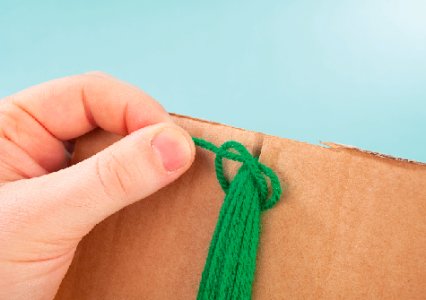Follow our step-by-step guide to making your own truly budget breeding mop.
In this age of hi-tech fishkeeping in some ways we know more than ever, but I can’t help wondering if some of the traditional, more basic skills are being lost.
So, behold, a breeding aid that’s every bit as useful as baby brineshrimp or a breeding trap — and costs pennies!
What are they for?
As the name suggests, spawning mops are an aid in breeding fish — egg scatterers in particular — and these make up a huge percentage of the fish we regularly keep, from goldfish to Glowlight tetras.
The eggs of such fish are adhesive and scattered over plants or fine tree roots in the wild where they stick, develop and hatch.
The spawning mop is a man-made device to simulate the job of plants in the wild, catching the eggs and offering some protection from the predatory parents until you can spot the laid eggs. The mops with the eggs and parents should then be separated.

Why use wool?
Mops are typically made from wool and any yarn, synthetic or natural will do — just like your grandma uses when knitting. The fibres are perfect for catching eggs and the wool itself is soft on the fish’s body. This is significant, as in the case of cyprinids like barbs and goldfish over-amorous males like to drive the females through the mops and can be pretty hard on them.
Breeding tanks are typically bare for hygiene regions — to help prevent fungus forming on the eggs — but bare tanks also help you spot any eggs that might
have missed the mops.
Place your finished mops in a bare tank and, with a bit of luck, those randy egg scatterers will head straight for them.
Mops or plants?
Why use artificial mops instead of plants? Mops actually work better, having more surface area to catch eggs, but, most importantly, they can be kept clean and sterile by washing or soaking them. Then, when you’ve finished with them, dry and store them.
Two types of mops are used and floating ones are the most common. Make them buoyant by tying them to wine corks or, in this case, pieces of polystyrene. To increase your egg-catching abilities use sinking mops, which are exactly the same but minus the floats.
Project breakdown
What you need: A piece of cardboard, scissors, wool and polystyrene packing material
Time taken: Under five minutes if you know how.
Cost: Ball of wool from £1.29 upwards from Hobbycraft. One ball will make loads of mops.
Effectiveness: Nothing beats a wool spawning mop for breeding egg-scattering fish.
How to make your spawning mop

1. Snip your card
Very few items are needed to make your mop. One is a piece of cardboard and the first step is to cut a slit in it at the top and bottom.

2. Tuck in your wool
Having made the slits, take your wool, tuck it into the top slot and start winding it several times around the cardboard.

3. Wind and wrap
I’ve wrapped the wool around 50 times, but you can wrap more or less, depending on how dense you want your mops to be.

4. Trim and tie
With the last winding cut with scissors and tie it around at one end of the carboard. This will gather threads together, ready for removal.

5. Cut the opposite end
Cut the opposite end to the one that you have just tied with scissors. The cardboard has now done its job!

6. Remove in readiness
Take the clump of wool away from the board and your mop is now formed and nearly ready for your tank.

7. Make it buoyant
Using two strands from the mop get a wine cork or piece of polystyrene and tie it on with a loop to make it buoyant.

8. Squeeze out any air
Place it in your breeding tank and squeeze the air out of the wool. Hopefully this will soon be showing signs of eggs. Job done!
Why not take out a subscription to Practical Fishkeeping magazine? See our latest subscription offer.







